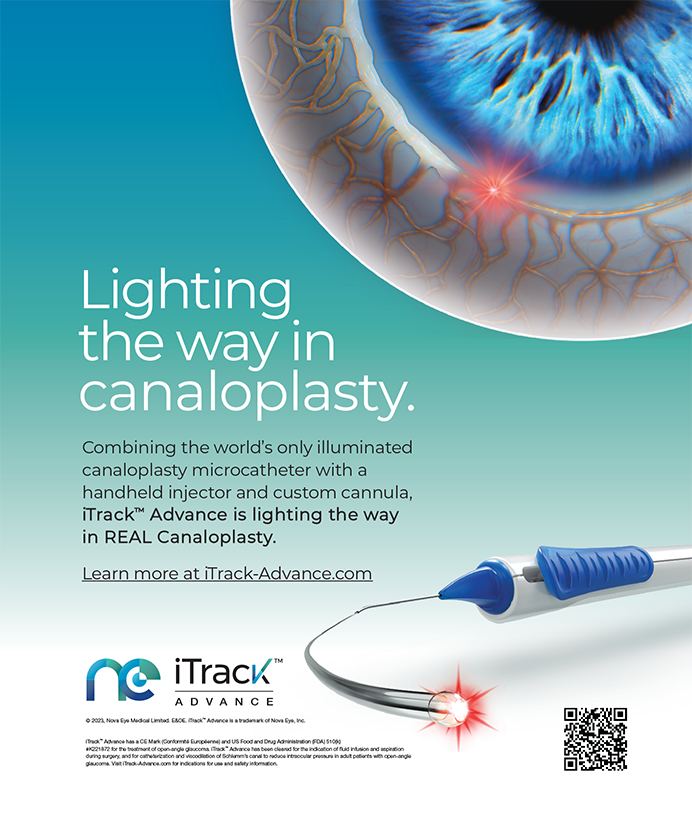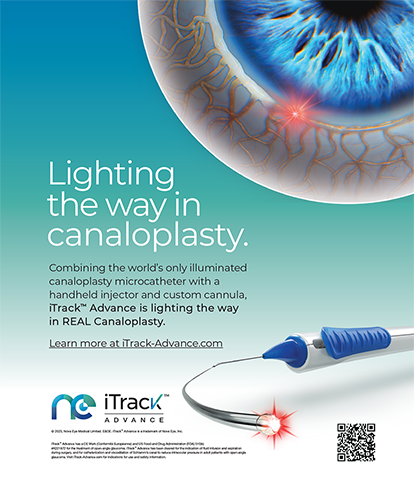Two of the most problematic LASIK complications that patients and surgeons can experience are a buttonhole flap and an irregular keratectomy. Whether patients heal from such complications and eventually achieve their best-corrected vision depends on excellent surgical technique in managing these complications.
GETTING TO KNOW YOUR MICROKERATOME
Learning to prevent irregular and buttonhole keratectomy complications begins with a thorough understanding of the microkeratome or microkeratomes being used. I have long advocated taking intraoperative ultrasonic pachymetry readings to help understand how the microkeratome is performing, even though the readings may not be as accurate as desired. Bo Huang, MD, my research assistant, and I have shown with three different microkeratomes (the ACS [Bausch & Lomb Surgical; Claremont, CA], the Carriazo Barraquer®, and the M2 [Moria Surgical; Antony, France]) that there is a direct relationship between the central corneal pachymetry and the achieved flap thickness. For example, in the case of a high myope with a thin cornea, the tendency for most surgeons is to select a microkeratome head that creates a flap 30 µm shallower than the surgeon's standard keratectomy. If the standard depth of the microkeratome head is 160 µm, a surgeon may choose a 130-µm head for the case in the hopes of preserving the posterior cornea and avoiding the risk of ectasia. However, with the 160-µm head, the flap will be thinner because of the flexibility of the thinner cornea. Thus, a 160-µm head would actually produce the desired 100-µm flap, whereas a 130-µm head would most likely result in a 60- to 70-µm flap, and lead to an irregular keratectomy or a buttonhole keratectomy (Figure 1). Therefore, before attempting a keratectomy on a thin cornea for which you need a 100-µm flap, it is imperative to feel comfortable with the cut the microkeratome will produce, given a certain corneal thickness. I strongly recommend that surgeons generate a nomogram for each of their microkeratomes so that they can understand this dynamic, and ultimately prevent such serious complications.
MANAGING THE FLAP
An unexpected irregular flap or keratectomy requires a technique in which the surgeon can align the epithelial edges and achieve tight adherence between the flap and underlying bed. With the horizontal track and rail microkeratomes, such as the Chiron ACS® (Bausch & Lomb Surgical), often an irregular or thin flap can be left in position without any manipulation. Again, it is important that the flap adhere strongly within 5 to 10 minutes, which can be achieved by constantly drying the gutter, using either aspiration or a Merocel® (Mystic, CT) surgical sponge. A pivot microkeratome, such as the Hansatome™ by Bausch & Lomb Surgical, and the Carriazo Barraquer®, can torque the flap backward with its own movements. Although the side-to-side movement of the flap may be as subtle as 0.5 mm, it can cause the epithelial edges to be misaligned, which can result in severe ingrowth. Particularly with a buttonhole flap, it is extremely important that the edges of the epithelium on the island align with that of the surrounding flap.
I treated two referral cases in which this occurred, and there was such severe epithelial ingrowth that the overlying flap melt required a therapeutic lamellar keratoplasty. With the buttonhole, I recommend floating the flap back into position (Figure 2). If the buttonhole tissue is not centered, or if the buttonhole's epithelium cannot be aligned with the overlying flap, then I suggest removing the epithelium from the center buttonhole so that Bowman's layer is exposed (Figure 3). This allows the epithelium from the irregular flap to continue to grow over the Bowman's layer island, rather than having the center epithelium possibly grow underneath the thin flap. I also recommend that once buttonhole and irregular keratectomies involving the visual axis epithelialize, that the surgeon place the patient on mitomycin C 0.3% four times per day for 1 month to reduce any anterior stromal fibrosis which can occur when incising the anterior stroma.
As we gain a better understanding of our microkeratomes and the natural physical properties of the cornea, such threatening complications may be avoided entirely.Stephen A. Updegraff, MD, is Medical Director of Updegraff LASIK Vision in St. Petersburg, Florida. He has instructed LASIK courses for the International Society of Cataract and Refractive Surgeons, and has also presented and directed courses on LASIK for the American Academy of Ophthalmology and the American Society of Cornea and Refractive Surgery. Dr. Updegraff may be reached at (727) 822-4287; updegraffmd@lasik4me.com


